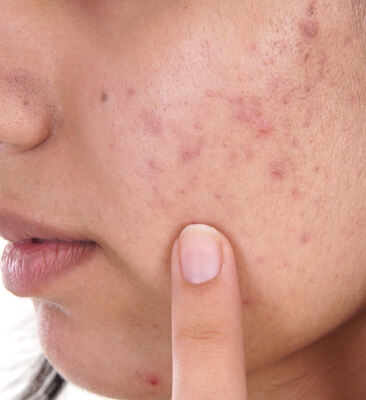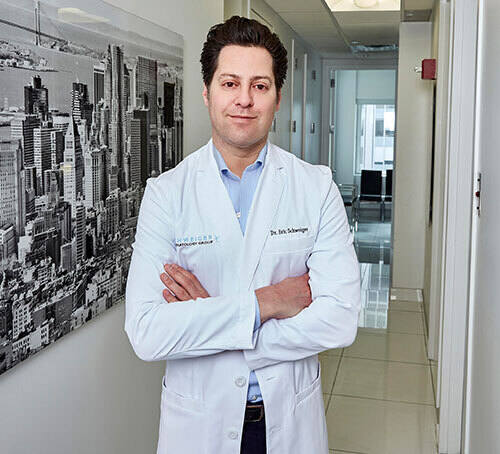Diagnosis and Treatment of Acne Scars

If acne makes you self-conscious, the scars are no picnic, either. Pits, impressions, lumps, and color spots left over from your battles with blackheads can be both embarrassing and disheartening. If you’re frustrated about your battles with acne scars, just remember you’re far from alone. Up to 95% of acne patients experience scarring of some kind.
We’ve got your back. The first step to dealing with these scars is understanding them. Here’s your personal in-depth guide to the different types of acne scars and how to treat them.
Atrophic scars
Atrophic scars are pitted, rather than raised or flat. They appear as impressions in the skin, and can be difficult to treat. The three types of atrophic acne scars are icepick scars, boxcar scars, and rolling scars.
- Ice pick scars
Ice pick scars form after a case of severe acne. Because they penetrate so deep into the skin, these are some of the most noticeable acne scars.Ice pick scars are small and narrow, usually measuring less than 2 mm in length, with a cylindrical shape. They’re also pitted, which means they appear as depressions in the skin. If you have ice pick scars, it may look like someone punctured your skin with a tiny ice pick. These types of scars are most common on the cheeks, chin, and jawline, although they can occur anywhere.While ice pick scars may soften a little over time, they usually require treatment from a dermatologist. In most cases, the depth of ice pick scars makes it impossible for the skin to heal up completely. - Boxcar scars
Like ice pick scars, boxcar scars are pitted – though they tend to be shallower and wider. Boxcar scars look like punched out depressions in the skin, oval or rectangular in shape. And they have sharp vertical edges. In diameter, they usually run between 1.5 and 4 mm. They can look a lot like chickenpox scars. Boxcar scars appear most often on the cheeks and temples.Like ice pick scars, these usually need treatment, and won’t go away completely on their own. - Rolling scars
These are the most common type of acne scar. Shallow and wide, they have sloped edges, which gives them their “rolling” appearance. They may look like tiny valleys, and can cause your skin to look uneven or wavy.Rolling scars are usually caused by long-term acne. And while they may be hardly noticeable in younger people, they tend to get worse as you age and your skin starts to lose its tightness.If your rolling scars are especially shallow, they may fade with time. Most rolling scars will soften a bit eventually. But you’ll probably need treatment to get your skin back to its original state. The good news is, since rolling scars are so shallow and soft, they’re the easiest to treat. So chin up!
Hypertrophic scars
Unlike atrophic acne scars, hypertrophic scars are raised rather than pitted. They occur when the scar rises above the skin’s surface, and can look like thick red lumps. They may feel rubbery.
Hypertrophic scars usually settle and fade on their own, leaving behind minimal scarring.
- Keloids
When a hypertrophic scar grows to cover a larger area of the skin, it becomes a keloid scar. Keloids occur when the body produces too much scar tissue over a wound, which means they can be caused by injury as well as by acne. Some people are more prone to keloids, especially those with Asian and African skin types.Keloids can look like small bumps, or they can be more severe – with the skin swelling up and forming a large bubble. They usually appear shiny and smooth, with a rounded shape, and they can be purple, pink, or brown. Keloids often feel rubbery, and they may be itchy or even painful. They’re most common on the shoulders, upper back, chest, ear lobes, arms, and collarbone – though they can show up anywhere.Once a keloid appears, it can continue growing for weeks or even years. Eventually, it will stop growing, but it won’t usually go away on its own. With treatment, you can usually get rid of the sucker. Just be prepared: keloids have a habit of coming back.
Changes in pigmentation
Those dark red patches on your face that remind you of that horrible acne attack you had a few months ago, or those white acne scars that won’t go away – those are pigmentation issues. They’re not exactly scars, but they’re often caused by acne, and they can be permanent.
- Hyperpigmentation
Hyperpigmentation is a change in skin color left over from acne – in other words, those dark marks you get on your skin in the places where your acne used to be. Pigmentation is just the natural coloring of your skin. So hyperpigmentation means the body has produced too much pigment, causing your skin to break out in dark spots.These spots can be red, brown, or black. They might look like small marks spread out over a large area of skin. Or they might be more like patches of darker skin. Either way, there’s no doubt they can be embarrassing.Hyperpigmentation from acne will usually lighten with time – though it may take anywhere from three months to two years. It all depends on how dark those spots are. In some cases, you may still be left with slightly darker marks on your skin, even after years have passed. If you’re in this boat, you can always ask your dermatologist for advice or use make-up to cover the blemish. - Hypopigmentation
Hypopigmentation is just the opposite of hyperpigmentation. While “hyper” means “more,” “hypo” means “less.” So hypopigmentation means that, instead of darkening, the area where your acne was will lighten. This happens when the body loses pigment because of tissue damage.Hypopigmentation appears as white or light spots on the skin. The marks may start out brown or pink but fade to white over time.After your acne goes down, hypopigmentation can fade within a few weeks or months. If you still have white spots left over after a few months have passed, it usually means the pigment has been destroyed, and you’ll need to get treatment in order to fill in those spots for good.
How to Treat Acne Scars
- F.A.S.T. treatment
Focal Acne Scar Treatment (F.A.S.T.) uses a CO2 laser to poke tiny holes in the skin and fill them in with new collagen (your skin’s connective tissue). This treatment method is especially effective for atrophic acne scars, like ice pick and boxcar scars. - PRP
Platelet Rich Plasma (PRP) is a minimally-invasive treatment that uses your blood’s natural growth factors to heal the skin. A dermatologist will draw your blood, convert it to PRFM (Platelet-rich Fibrin Matrix), and inject it into the site of your acne scar. PRFM promotes healing and grows new collagen, which fills in and smooths out the scars. - Microneedling
Microneedling uses fine needles to puncture the top layer of your skin, which stimulates your body’s natural healing processes and creates new collagen. Microneedling works best for treating atrophic scars, though it can also be used to fix pigmentation issues. - Chemical peels
Chemical peels treat hyperpigmentation using a chemical solution that causes the skin to exfoliate. This is a great way to regenerate the skin and get rid of any dark marks.The enemy you know is always better than the enemy you don’t know. Now that you understand a little more about your acne scars, you’re better equipped to deal with them. Remember that most people have to live with acne at some point, and many have to deal with scars afterward. You’re not alone!
